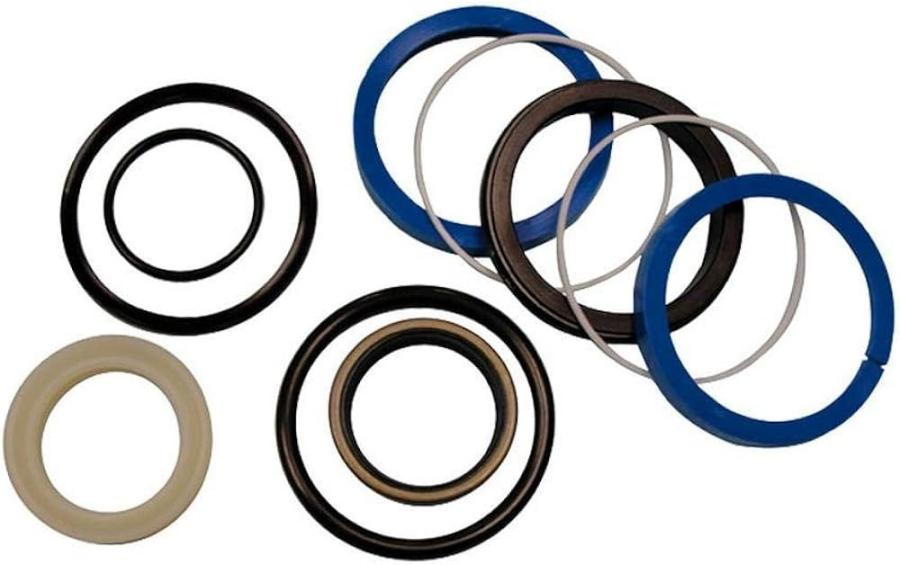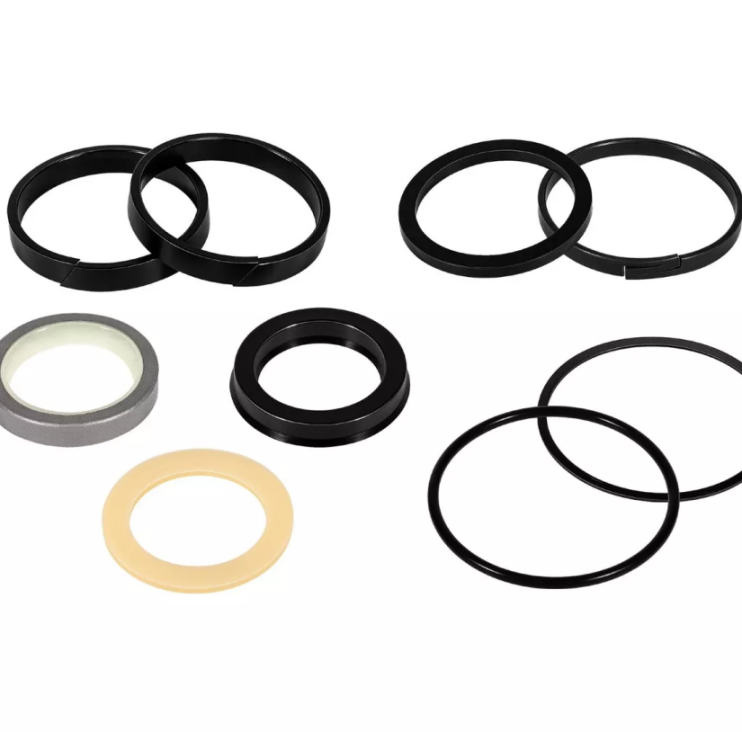Backhoe loaders are indispensable in construction and agriculture, excelling at tasks like digging, trenching, and material handling. The global market for these machines is expected to hit USD 2.84 billion by 2026. A key element in their performance and durability is the variety of mechanical seals used. Effective maintenance and the right seal selection are crucial for optimal operation and longevity.

We are dedicated to achieving "100% client fulfillment" through top-notch products, competitive pricing, and outstanding service. Our strong reputation has enabled us to expand our reach to markets in Germany, Turkey, Canada, the USA, Indonesia, India, Nigeria, Brazil, and more. As we aim to be a leading global supplier, we offer a 7-day return policy if you're not satisfied with our product quality. We eagerly anticipate working together for our mutual success.
Understanding Backhoe Loader Seals
Where Seals Are Used in Backhoe Loaders
Seals are integral to the functionality of backhoe loaders, serving crucial roles across various systems. In hydraulic systems, seals prevent hydraulic fluid from escaping, which is essential for powering the loader's arms and other moving components. Engine seals are vital for containing oil and coolant, thereby avoiding leaks that could potentially damage the engine. Additionally, seals in joints are designed to keep out contaminants such as dirt and debris, ensuring smooth operation and minimizing wear and tear on the moving parts.
Types of Seals Commonly Used in Backhoe Loaders
Backhoe loaders rely on several types of seals, each suited to specific functions. Hydraulic seals are engineered to handle high pressure and temperature fluctuations, ensuring the hydraulic system's integrity. O-rings are versatile seals used in various applications to create a tight seal between stationary and moving parts. Gaskets are used to seal joints between flat surfaces, like those between the engine block and cylinder head, to prevent fluid or gas leaks. The choice of seal type depends on the specific needs of the component it is designed to protect.
Functions of Seals
Seals in backhoe loaders primarily serve to prevent fluid leakage, keep contaminants out, and maintain necessary pressure. By stopping fluid leaks, seals ensure that essential fluids such as hydraulic oil, engine oil, and coolant remain within their respective systems, which is crucial for the loader's performance. Seals also block contaminants from entering sensitive areas, thus protecting components and ensuring smooth operation. Maintaining pressure within hydraulic systems is essential for the loader's mechanical arms and other hydraulic components to function correctly.
Consequences of Seal Failure
Immediate and Long-Term Impacts of Seal Failure
Seal failure in backhoe loaders can result in both immediate and long-term negative effects. Immediately, a failed seal can cause fluid leaks, leading to a loss of hydraulic pressure and decreased operational efficiency. Over time, repeated seal failures can lead to significant wear and tear on components, resulting in costly repairs and extended periods of downtime. Persistent seal issues can also shorten the loader's overall lifespan, potentially requiring early replacement of the equipment.
Case Studies Highlighting Repercussions of Neglected Seal Maintenance
Several case studies underscore the severe impacts of neglecting seal maintenance. For example, a construction company that did not routinely inspect and replace worn hydraulic seals experienced frequent hydraulic system failures, resulting in project delays and increased repair expenses. In another instance, an agricultural business faced a hefty engine rebuild bill due to oil leaks from failed engine seals that had gone unaddressed for too long. These cases illustrate the critical need for proactive seal maintenance to avoid mechanical breakdowns and financial losses.
Safety Issues from Seal Failures
Seal failures also pose significant safety risks. Leaking hydraulic fluid or engine oil can create hazardous, slippery surfaces, increasing the risk of slips and falls for operators and maintenance staff. Additionally, loss of hydraulic pressure due to failed seals can lead to uncontrolled movements of the loader's arms, endangering operators and nearby workers. Moreover, fluid leaks can cause environmental contamination, leading to regulatory non-compliance and potential fines.
Maintenance Strategies for Seals
Regular Inspection Routines
To detect wear and tear early, regular inspection routines are essential. Frequent visual inspections should be performed to identify signs of leaks, cracks, or other damage. Utilizing tools such as pressure gauges and fluid analyzers can help identify subtle changes in system performance that may indicate seal degradation. Early detection through routine inspections allows for timely seal replacement, preventing more severe problems from developing.
Recommended Maintenance Practices
Effective seal maintenance involves cleaning, lubrication, and timely replacement. Keeping seals clean and free from debris helps extend their lifespan and maintain their effectiveness. Regular lubrication reduces friction and wear on seals, particularly in high-motion areas. Replacing seals according to manufacturer recommendations and inspection findings ensures that worn or damaged seals are addressed before they cause significant issues.
Criteria for Selecting High-Quality Replacement Seals
Selecting high-quality replacement seals is crucial for maintaining backhoe loader performance. Key criteria include compatibility with the specific application, material quality, and resistance to environmental factors such as temperature and pressure variations. High-quality seals are designed to endure the demanding conditions of backhoe loader operations, offering greater longevity and reducing the frequency of replacements.
Advances in Seal Technology
Recent Developments in Seal Materials and Design
Recent advancements in seal technology have greatly improved their durability and efficiency. New seal materials, such as high-performance elastomers and polymers, offer enhanced resistance to wear, heat, and chemical exposure. Advances in seal design, including the use of multiple sealing lips and advanced sealing profiles, provide better performance and longer service life.
Impact of Technological Advancements
Technological improvements have significantly extended the lifespan and performance of seals. Enhanced materials and designs help reduce wear and tear, allowing seals to maintain their effectiveness for longer periods. This leads to fewer replacements, reduced downtime, and overall increased productivity and reliability of backhoe loaders.
Proprietary Technologies and Benefits
Proprietary technologies have been developed to address specific challenges in harsh environments. For instance, self-lubricating seals reduce friction and wear in high-motion applications. Other innovations include seals designed to withstand extreme temperatures and aggressive chemicals, ensuring reliable performance under demanding conditions. These technologies offer tailored solutions that enhance the durability and functionality of backhoe loader seals.
Case Study: Implementing Best Practices
Successful Implementation of Seal Maintenance and Upgrade Strategy
A detailed case study involves a construction company that effectively implemented a seal maintenance and upgrade strategy. By performing regular inspections, following recommended maintenance practices, and using high-quality replacement seals, the company significantly reduced seal failures. This proactive approach led to improved machine reliability and reduced operational downtime.
Performance Improvements and Cost Savings
The company experienced notable performance improvements and cost savings as a result of their maintenance strategy. Fewer seal failures meant reduced repair and replacement costs. Enhanced reliability of the backhoe loaders also improved operational efficiency, allowing the company to complete projects faster and with fewer interruptions.
Lessons Learned and Recommendations
Key lessons from this case study highlight the importance of regular inspections, adherence to maintenance best practices, and selecting high-quality seals. Other backhoe loader operators are encouraged to adopt similar strategies to improve equipment performance and longevity. Investing in effective seal maintenance not only prevents costly repairs but also ensures safe and efficient operation of backhoe loaders.
Final Thoughts
Backhoe loader seals play a vital role in ensuring the efficiency, safety, and durability of these versatile machines. Regular maintenance, which includes routine inspections, timely replacements, and the use of high-quality seals, helps prevent fluid leaks, block contaminants, and sustain necessary pressure. Innovations in seal technology have further boosted their durability and performance, leading to reduced downtime and lower operational costs. By embracing best practices for seal maintenance, operators can significantly enhance machine reliability and project efficiency. Investing in the upkeep of backhoe loader seals ultimately supports the overall success and safety of construction and agricultural activities.

